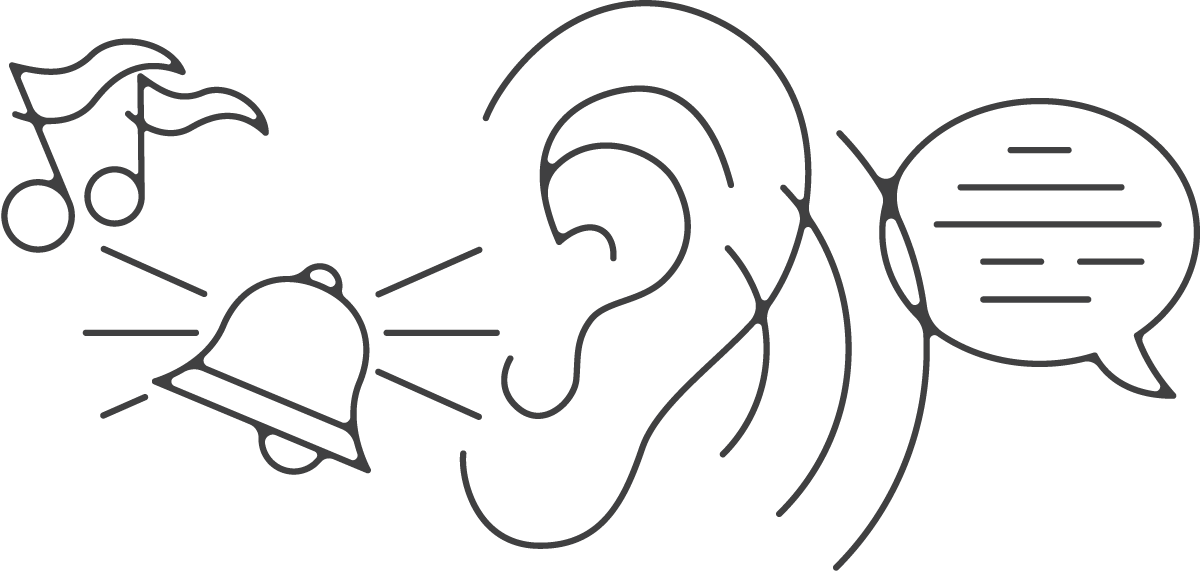We all are familiar with a logo and what it means to us as consumers. You might think of famous logos like Apple, Target, Nike, Starbucks, Disney, and the like. The images that come to mind are tied to one of our main sensory inputs. Vision.
The visual representation of these brands have helped these businesses create their companies and build a customer base around the world. The visuals that come to mind when we think of brands is extremely important because as humans we rely heavily on our visual cortex to provide us with information about the world around us. From the logo, to the colors of the brand, or certain product design details. Our visual system is a key component of brand creation which is why logos and identity systems are so important.
Another sensory input we depend on heavily is our auditory sense. Our hearing gives us ample information as well as what is going on around us. It actually gives us depth of space and the understanding of where certain sounds come from. Beyond environmental feedback, audio is crucial for identification as well. As a baby, you depended on this sense to identify your mother’s heartbeat and breathing pattern. The voices of your parents also become encoded in your brain as they became familiar to you in the high and low notes. This is why as a parent, you can pick out your child’s cry out of a noisy playground or simply know when you hear a familiar voice in a crowd. It’s a powerful input tool our brains rely on to make sense of our environment, but also identify and remember certain places, things, and people.
When it comes to brand creation, it makes sense to lean into how the brain is already wired to function. Yes, we do with with visual identity systems for brands that are unique and memorable. We do with storytelling and romanticizing products and business histories as well. Yet, only few brands have leveraged the power of sound.
Let’s imagine audio as an extension of the brand. A way to represent your business in a non-visual way. Just as a logo works as a face for a brand, your brand’s sound will work as a familiar voice. This auditory tool is the way for you establish more of your brand in your audience’s perception.
Yes, some brands have a tone, chime, or jingle that goes with their brand. From NBC’s tonal sound to the Home Depot’s inspiring beat. Beyond chimes and jingles, brands can capitalize on familiar sounds used in the engagement of the business. Apple’s phone sounds for taps, calls, alerts, etc. have become unforgettable while Harley Davidson’s iconic motor sound is so special that they managed to trademark the sound logo.

In Starbucks, you may think of the certain type of music they play, the sound of coffee beans grinding, or even the fact they call out names. Although it seems like day-to-day operations, I’m sure you know which brand I’m referring to when I say “have a magical day.” From Chick-fil-A’s “my pleasure” to McDonald’s “would you like fries with that?” — even these consistent customer interactions reinforce the brand during the customer experiences and can become encoded in our minds.
Twitter uses simple tones and sound effects when you load, tweet, or interact, adding another layer to their product and brand. BMW has a certain sound that is iconic to them when you shut your door that is designed to sound like entering a cockpit. Even the “chimes” sound that Amazon’s Ring uses to notify of activity as become iconic and synonymous with the brand. When you hear it, you know it’s Ring. Not Nest or another competitor. It’s a signal to alert the owner, but also a tribal signal to reassure other owners that your purchase of Ring was a smart one through peer confirmation as they hear the familiar sound. Used appropriately, that familiar sound might even become one of the primary brand connectors. For example, everyone in the house knows when someone is launching Netflix on the TV.
Keep in mind that it doesn’t have to be a certain, custom made tone or chime. It could very much be as simple as the music you choose to play while your customers shop or while waiting on the phone. One study found that when a wine store played German music, they sold more German wine. When they switched to playing French music, they sold more French wine. The power of sound can influence the behavior of the consumer to lean into the stage you are presenting before them.
As much as we make take sound for granted, it is very obvious of its importance in the creation of a brand. You know how important your brand’s logo is as a visual representation of your brand. Now just be as mindful and strategic to how your brand sounds.

